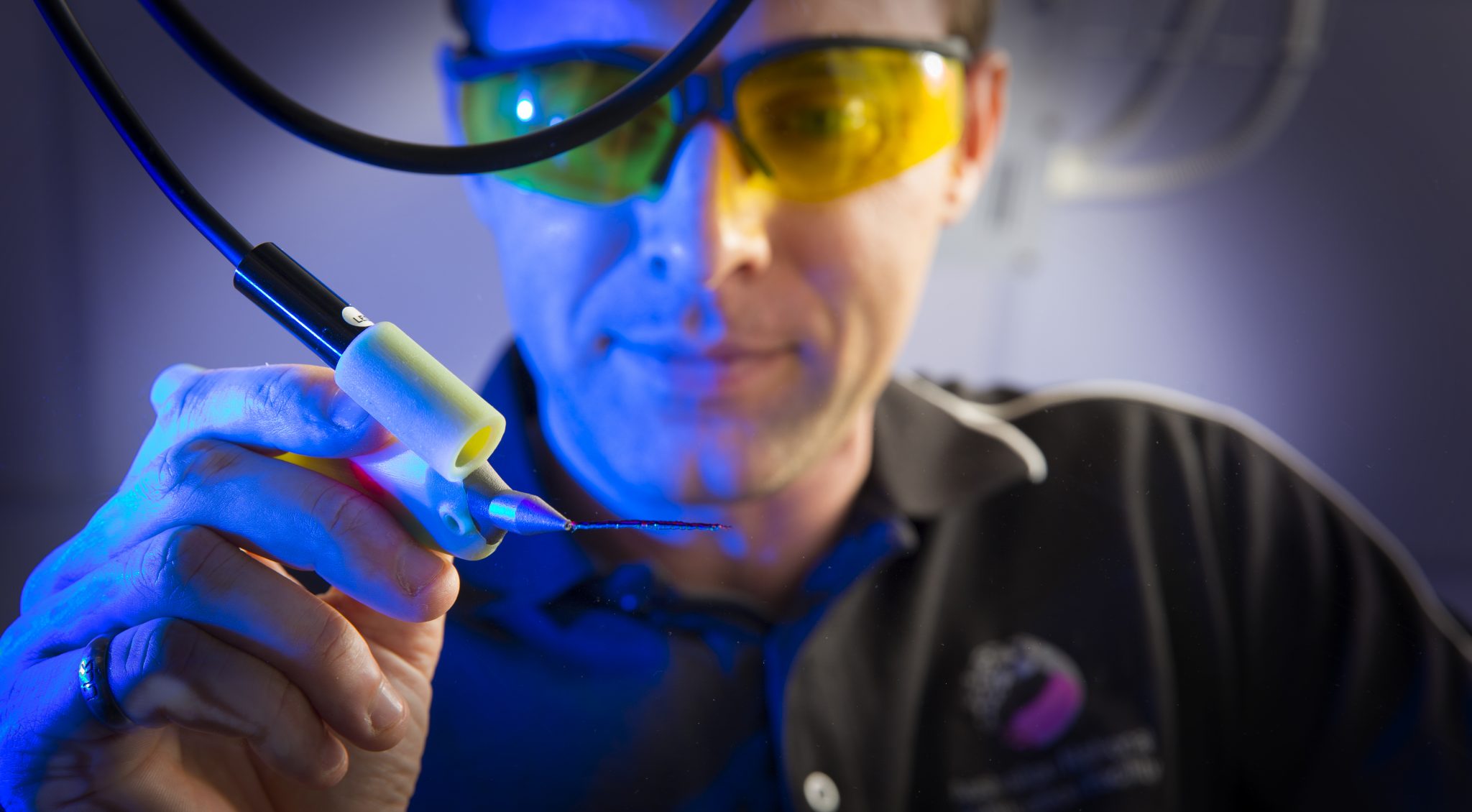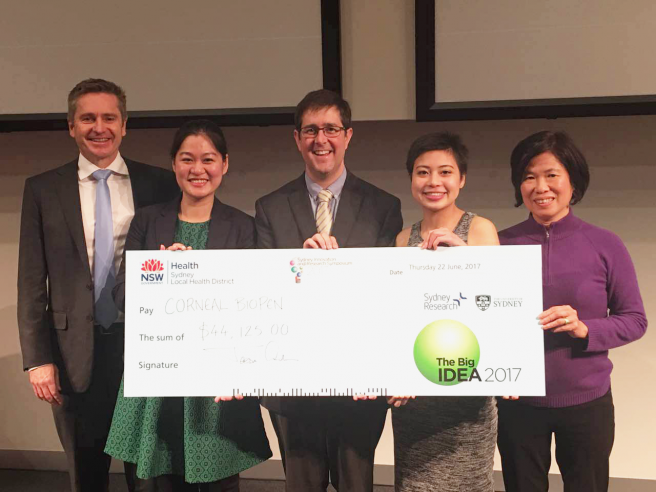The University of Sydney’s Save Sight Institute has been awarded a $1.15 million (AUD) grant from the New South Wales (NSW) Government’s Medical Devices Fund (MDF) to progress commercialization of its 3D corneal biopen.
The iFix Pen, a hand-held co-axial 3D printer, extrudes bioink directly onto an eye to aid in the regeneration of cells on corneal ulcers. The pen also creates a biological barrier towards ongoing cornea damage caused by infections.
Brad Hazzard, the New South Wales Minister for Health and Medical Research, announced the recipients of the MDF, last Wednesday at the Parliament House in Sydney, Australia.
“Since the Medical Devices Fund began in 2013, the NSW Government has awarded more than $50 million in grants to 31 technologies,” said Hazzard.
“We are committed to supporting innovators in the medtech industry in getting their brilliant ideas off the ground and ultimately saving millions of lives around the world.”

The iFix Pen project
The iFix Pen Project is led by Gerard Sutton, ophthalmologist and Professor of Corneal and Refractive Surgery at the Sydney Eye Hospital, University of Sydney and Professor Gordon Wallace, Founder and Director of the Intelligent Polymer Research Institute, University of Wollongong (UOW).
According to the Save Sight Institute, corneal ulceration, a painful open sore on the clear front surface of the eye which can lead to blindness, is a common problem in Australia and developing countries. Approximately 55,000 Australians with corneal ulceration present themselves to hospitals for treatment each year.
Thus, Professor Sutton and Professor Wallace began developing the iFix Pen Project as an alternative treatment that will potentially reduce the number of patients afflicted with corneal ulceration. The team’s research, which was first reported in the journal Biofabrication in 2016, has shown that the iFix Pen can accelerate feeling, minimize pain and reduce patient recovery time, through the deployment of antibiotics.
The project also collaborates with Professor Peter Choong, Sir Hugh Devine Chair of Surgery, and Head of Department of Surgery at the University of Melbourne, and the NSW Organ and Tissue Donation Service.

The Big Idea Grant
In 2017, the iFix Pen project was awarded $45,000 (AUD) in pre-seed funding through Sydney Local Health District’s Big Idea grant which the research team used to commence surgical tests on sheep.
“Winning the Big Idea last year gave us two things,” Professor Sutton says. “It gave us credibility when we were applying for other grants and the self-belief that we had a great idea worth developing.
“The iFix pen is one part of an overall corneal bioengineering project and, with the support from The Big Idea and the Medical Devices Fund, we are also hoping that within the next five to 10 years, we will be able to develop a 3D bioengineered cornea.
Last year, Professor Wallace’s UOW research team was also awarded a $347,070 (AUD) LIEF grant for a 3D Additive Bio-Fabrication Facility to create the next generation of bioprinting methodologies and 3D fabrication tools.
The iFix Pen is expected to undertake a phase 1 human trial in 2019.

Stay abreast of the latest news in 3D printing by subscribing to the 3D Printing Industry newsletter. Also, follow us on Twitter, and like us on Facebook.
On the lookout for new talent or seeking a career change? Search and post 3D Printing Jobs for opportunities and new talent across engineering, marketing, sales and more.
Featured image shows Dr. Stephen Beirne of the Australian National Fabrication Facility with the iFix Pen. Photo via Australian Research Council Centre of Excellence for Electromaterials Science (ACES).

